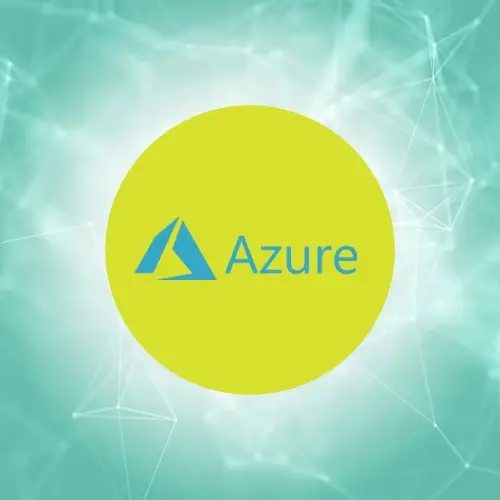Stelo + Amazon Web Services

Stelo is a cost-efficient, low-impact, real-time data replication software that can deliver data easily and efficiently into Amazon Web Service (AWS) environments.
Businesses require more flexibility as they continue transitioning away from maintaining on-premise data centers to adopting more complex data system ecosystems. You need reliable data ingestion and streaming for applications like predictive analytics, business intelligence, or client reporting. Stelo connects all source and destination types for every use case, so you can easily offload data processing, storage, and analytics from costly production systems.
Start moving operational data from your on-site database to a cloud-based AWS platform for use in Amazon RDS and delta lake applications. Moving data across a wide area network (WAN) is inherently associated with a high level of latency due to limitations on how fast data can transmit across a network. Stelo compensates for the inherent high latency of WANs, providing a seamless experience. Easily replicate millions of transactions per hour and transfer data sets over 1TB. No matter the use case, Stelo deployments are readily customizable with a focus on robust performance.
Connects From
 Customizable
Customizable
Anywhere-to-Anywhere
Avoid vendor lock-in. Stelo uses heterogeneous replication for bi-directional support across all source and destination types. Our open-standards approach allows us to remain vendor-agnostic while providing highly flexible deployment models.
 Quick Setup
Quick Setup
Rapid Deployment
Streamline your deployment plan without costly delays. Stelo typically deploys in less than a day and cuts production time down from months to only weeks.
 Easy-to-Use
Easy-to-Use
Set It and Forget It
Simple installation with GUI interface, configuration wizard, and advanced tools makes product setup and operation straightforward, with no programming needed. Once running, Stelo reliably operates in the background without requiring dedicated engineering support to maintain and manage. Alter, add, and drop schema changes are replicated automatically.
 Cost-Efficient
Cost-Efficient
Unlimited Connections
A single instance can support multiple sources and destinations without additional licensing. The Stelo license model is independent of the number of cores to either the source or destination, so you only pay for the capacity required to support the transaction volume. Your data ecosystem can change over time without additional costs.
 Reliable
Reliable
Automatic Recovery
If a connection is broken, no data is lost. Stelo will automatically resume replication without needing to re-baseline in the event of a connectivity failure.
 Low Latency
Low Latency
Multi-Threaded Processing
Stelo leverages native data loading functions, and exploits multithreaded processing to provide fast, reliable performance for replicating multiple tables concurrently.
Flexible, Real-Time Data Connectivity to the Cloud
This customer needed to scale its in-house IBM Db2 database system to provide remote employees with fast, reliable access to shared company data without sacrificing data security or integrity. The cloud-based solution entailed transferring its customer relationship management (CRM) and support-tracking applications to AWS. Most importantly, the newly architected system required the ability to maintain a local hot backup without service interruptions.
Stelo delivered the following results:
- Reliable, secure 24/7 access to all corporate data for remote employees
- Real-time access to 50,000 customers and their data is instantly accessible
- Cloud storage with authorized access, giving optimal flexibility and security
FAQ
The short answer is yes.
Stelo takes full advantage of open standards such as DRDA, SQL, ODBC, and JDBC to maximize compatibility and interoperability within an enterprise network. We are an active member of The Open Group software industry consortium, which was responsible for the adoption of DRDA as an industry standard for database interoperability.
Currently, Stelo supports more than 30 ODBC databases and our Kafka interface can also be used to communicate with cloud-based streaming services such as Azure Event Hubs for Kafka, the Oracle Cloud Infrastructure Streaming service, Amazon Managed Streaming for Apache Kafka, and IBM Event Streams. Stelo can also populate Azure Data Lake Storage Gen2 (ADLSg2) and similar NoSQL data repositories.
Stelo continues to use our open standards approach to ensure that we meet emerging replication requirements. We are continually adding support for new technologies while supporting legacy systems. Stelo is designed to grow with your organization rather than lock you into any specific database platforms.
Stelo offers simple installation and GUI-based replication. Our user-friendly, browser-based GUI does not require a programming background to set up or operate. The easy-to-use interface comes standard across all Stelo solutions for snapshot, incremental, and bi-directional replication. Once running, Stelo reliably operates in the background without needing dedicated engineering support to maintain and manage.
Data Lake vs Data Warehouse vs Delta Lake vs Data Lakehouse: The terms can get confusing, but understanding these underlying pieces is critical for ensuring you set up a cost-effective data integration architecture.
A data warehouse is a relatively limited-volume data repository and processor of aggregated structured data from relational sources. The replicated data mirrors the source database to provide traditional query processing. Common applications include data analytics and business intelligence (BI). A data lake is a large-volume repository of aggregated structured and unstructured data from relational and non-relational sources. Key applications include machine learning (ML) and artificial intelligence (AI).
A data lakehouse is a big-data architecture that combines benefits of both data warehousing and data lakes, supporting data analytics, BI, ML and AI applications. A delta lake is an open-source storage layer placed above a data lake to create a data lakehouse, providing critical data governance and scalability for future-proofing your organization.
Stelo's delta lakes connector is compatible across your technology stack to efficiently populate your data lake. Our process can work in tandem with your traditional data warehouse to scale your data pipeline into a cost-effective data management solution. Read our "5 Questions to Answer Before You Start Moving Your Data to Delta Lakes" blog post to learn more about how to get started.
Yes. Whether you want to deploy either entirely in the cloud or used between on-prem and cloud databases, Stelo’s deployment models are designed to maximize performance without sacrificing flexibility.
Cloud technologies enable choice. Some companies prefer to stream data into cloud-based delta lakes while maintaining their existing data warehouse; that way, they can take advantage of new technologies from companies like Synapse while maintaining their existing applications. Others would prefer to get rid of their in-house data center all together.
Stelo encourages customers to make improvements by integrating technologies that allow them to use their data better. Advancing data management strategy is not about displacing current software and hardware investments; it’s about making it easier to leverage new technologies that can unlock your data’s embedded potential.
Once replication source and destination databases have been defined, Stelo uses change data capture techniques to capture and apply only change data. Our multithreaded processing is far more efficient than other replication tools on the market, not only to provide near real-time data availability, but also best in terms of reliability and robustness. Stelo’s custom technology blurs the overhead of the WAN connection and effectively delivers near real-time (under 1 second) replication, regardless of whether it's going into cloud or on-premise locations. If your use-case requires sub-second latency at all times, we will size the replication instance according to your high-water mark of DML activity to ensure near real-time data availability.
Yes, Stelo has an automatic method to build out data warehouses, so we can do the heavy lifting for you. It works well whether you're doing a migration up to the cloud or are continuing with ongoing replication.
We encourage you to configure Stelo to create the destination tables on the SQL Server. In part this is to ensure the proper mapping of change data captured on the source system and the destination table. Also, if the customer's High Availability (HA) software utilizes *AFTER images only for capturing change data, then Stelo must rely upon a synthetic column (the Relative Record Number or "RRN") to uniquely identify the row in the destination table, and it is unlikely that some tools such as the JDE tool would provide this column. Therefore, it is best to allow Stelo to create the destination, including this column for each table. Alternatively, if the HA software configures *BOTH images in the journals then we can dispense with the RRN column and just utilize any unique index (including a primary key) to identify rows.
Another issue that should be addressed in the planning stage is the use of Unicode data types on the destination SQL Server. We strongly encourage customers to use NCHAR/NVARCHAR data types for SQL Server as this provides the greatest fidelity when mapping data from IBM i EBCDIC to Windows and other non-EBCDIC environments.
Our recommendation is to allow Stelo to create the tables and exploit UNICODE data-types, and then use the tool to create any additional indexes.
Support Features
Accessible Support
Quick support is available for training, troubleshooting, version updates, and data replication architecture. 24/7 Urgent Incident Support is included in annual subscriptions.
Highly Experienced Team
Stelo’s technologists have more than 30 years' experience developing reliable data software. Whether you need basic support or have a tricky technical challenge, we can work with you to solve any problem.
End-to-End Proficiency
Our team has detailed knowledge of every data platform we support and can troubleshoot end-to-end replication pairing in heterogeneous environments to ensure the pairings are working properly.
Constant Evolution
Unlike some other solutions, Stelo won't go out of date. New source and target types are continuously added through active updates to stay compatible with emerging market requirements.
The Latest from Our Blog

Move Data to BigQuery Faster with Stelo, Now on Google Cloud Marketplace

Now Available on Azure Marketplace: Deploy Stelo in Minutes

Introducing Stelo v6.51: Simplifying Data Pipelines with a Modern Web-Based Interface

Stelo Achieves BigQuery Designation, Unlocking Legacy Data for Enterprise Cloud Analytics
Get Started
These three steps will help you ensure Stelo works for your needs, then seamlessly deploy your solution.
Schedule a Demo
Our expert consultants will guide you through the functionality of Stelo, using your intended data stores.
Try Stelo
Test the full capability of the software in your own environment for 15 days. No obligations.
Go Live
When you're ready, we can deploy your Stelo instance in under 24 hours with no disruptions to your operations.


